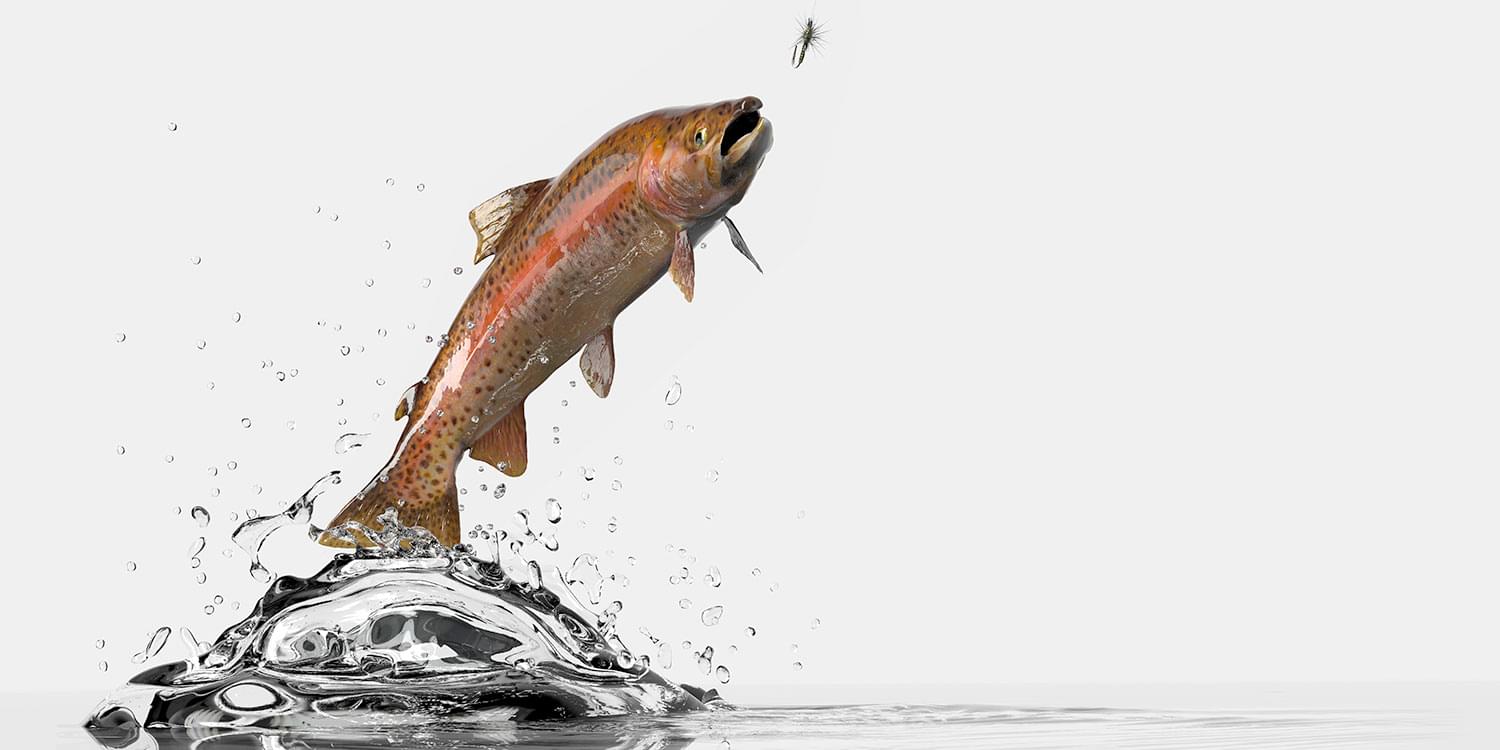Let’s cut to the chase
This is the title of the breakout session led by our CGI expert Luisa Gehlmann as part of the Connect event. In her entertaining talk held with Hubert Schlegl from the Witt Group, she took stock of the latest developments in the use of CGI technology for product communication and also ventured a forecast for the future. Offering tangible examples from practice, their message was plain as day! We have summarized their most important statements here.
Why is CGI even a topic? Well of course because the market is growing and interest in computer-generated imagery is increasing. In 2017, 75% of product images at IKEA were rendered and OTTO plans to generate 70% of its furniture portfolio using CGI by 2021/2022.* And the trend is clear beyond the furniture sector as well. This technology has already been in use for a long time in film production and the automobile industry.
As a media and IT service provider, Laudert decided in 2014 to expand its portfolio of services to include CGI production. Since then, the division has grown continually and the original team in Stuttgart has now been supplemented by a new CGI expert team at the location in Vreden. There we have the particular advantage that the photo studio, CGI, IT and media production divisions are all at the same location, allowing us to assemble agile teams spontaneously. This is evident in hybrid photography, for example, which combines real recorded images with virtually generated elements or spaces.
So an increasing number of customers are contracting CGI services. Of course, their requirements vary widely. When starting a collaboration, Laudert clarifies which objectives are to be achieved and the desired input: What data does the customer provide? This then serves as the foundation for production planning, during which Laudert focuses in particularly on the reusability of rendered content. For instance if an environment is generated using 3D data, this can serves as the basis for a close-up in the next production. In this way, customers benefit from valuable synergies across different productions.
The topic of CGI is really taking off at the Witt Group as well. The primary keyword here is: Give it a try. CGI technologies are implemented in various forms simply to test how this changes content production. Does this save costs and time? Where is the use of CGI worthwhile, and where is it not?
As a specific example, the Witt Group is testing the demand for products on the American market that don’t even physically exist yet. If a large demand is generated by virtual product presentation alone, this is a clear indication for actually producing the item. Another example where the use of 3D is well established is for the production of bedding. For two years now, the Witt Group has stopped using photo samples and instead generates entirely virtual image data based on the product data delivered by the supplier. This is a wonderfully refreshing collaboration for Laudert as a company that is constantly developing and trying new things. Following the style of innovation blogger Gerriet Danz, this is exactly the right attitude to allow innovation.
But now let’s really cut to the chase. What do the experts have to say about the future of CGI?
Hubert Schlegl explains his attitude by comparison with the development from analog to digital photography. At the time, no one could imagine that digital photography would become so developed that everyone can now take shots with their smartphones in a higher resolution than was ever possible with analog photography. Why shouldn’t CGI also develop into something big?
Luisa Gehlmann sees things similarly. Product communication is changing rapidly and in her view, CGI technology will continue to be a fantastic supplement to classical photography on the long term. According to the expert, the demand for hybrid photography will increase: At the click of a button, products can be staged in different spaces without incurring high costs. CGI is also particularly well suited for the area of prototype development: Product images are generated virtually to sound out the interest on the market as a first step. This allows for a better estimate of the demand for a product, which is crucial for production.
According to Luisa Gehlmann, holistic analysis is required before every production to define the most efficient solution approach: Is entirely virtual image creation beneficial, or is hybrid production appropriate? Is there already available data that can be used? Where can synergies be used?…
The insights of both experts indicate that CGI will likely play an increasingly important role in production communication for the future. We are excited to see where this journey takes us – or to use the words of Gerriet Danz: Let’s gaze into the crystal ball of CGI…

 Hanna Bugla
Hanna Bugla